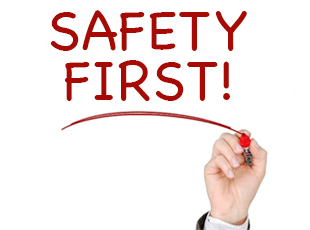The Occupational Safety and Health Administration recently released an updated “General Industry Digest” for 2015, an overview of what’s important to know in the world of occupational health.
Although in no way official guidance on compliance, this digest is a useful first step for employers, supervisors, workers and more, according to a recent article by Seyfarth Shaw LLP on JD Supra.
From the document:
“This publication provides a general overview of standards-related topics. This publication does not alter or determine compliance responsibilities which are set forth in OSHA standards, and the Occupational Safety and Health Act.”
However, the OSHA document does highlight need to know information, such as the top 10 most cited standards and the importance of implementing a successful injury and illness prevention program in your workplace.
Ten Most Often Cited OSHA Standards
Part of planning for the future is knowing what you have to plan for. Turning to this, OSHA shared with readers the most often cited standards in FY 2014 (Oct. 1, 2013, to Sept. 30, 2014), soon to be updated for FY 2015 in late October.
To help you better understand this, we have created a handy infographic which you can view below.
Importance of Successfully Running an Injury and Illness Prevention Program
Ensuring compliance is one thing, but taking proactive steps to reduce risk for employees is the first step to maximizing your organization’s Return on Safety™, the productivity, profitability, and engagement that comes with workplace safety.
“OSHA believes that injury and illness prevention programs provide the foundation for breakthrough changes in the way employers identify and control hazards, leading to a significantly improved workplace health and safety environment. Adoption of an injury and illness prevention program will result in workers suffering fewer injuries, illnesses and fatalities. In addition, employers will improve their compliance with existing regulations, and will experience many of the financial benefits of a safer and healthier workplace cited in published studies and reports by individual companies, including significant reductions in workers’ compensation premiums.”
Key Elements of an Illness and Injury Prevention Program
- Management Leadership: Management demonstrates their commitment to improve safety and health, establishes goals and objectives, and provides adequate resources and support.
- Employee Participation: Management actively involves employees in the program — for example, identifying and reporting hazards and investigating incidents. Employees are encouraged to communicate openly with management and report safety and health concerns.
- Hazard Identification and Assessment: Processes and procedures are put in place to continually identify and assess workplace hazards and evaluate risks.
- Hazard Prevention and Control: Processes and procedures are created and implemented to control workplace hazards.
- Education and Training: All workers are provided with education or training to carry out their part under the program. In addition, all workers are trained in a language and manner they can understand to recognize workplace hazards and trained in the control measures needed to protect themselves and other workers from these hazards.
- Program Evaluation and Improvement: Processes are established to monitor the program performance, verify implementation, and identify deficiencies and opportunities for improvement. Employers take necessary actions to improve the program.
For more information, the video below shows the first steps to implementing an effective illness and injury prevention program, as part of a recent presentation to the Metals Service Center Institute.
Need More? Join us at MSCI Safety 2015
Join MSCI, Optimum Safety Management Founder and President Steve Yates, and other industry leaders at MSCI Safety 2015, scheduled for October 12-13 2015. Mr. Yates will participate in Breakout Session 1B, OSHA Inspections: Mitigating Risk, from 10-11 a.m. on October 12, and lead Breakout Session 4B, On-Boarding New Employees, from 8:30-9:30 a.m. on October 13.
- OSHA Inspections: Mitigating Risk is a panel discussion in which Mr. Yates will join Matthew Horn and John Newquist to discuss steps that organization leadership must take to develop a plan in order to mitigate risk before, during and after an OSHA inspection.
- On-Boarding New Employees will introduce attendees to the steps that leaders must take to reduce risk with proper training and orientation to your company’s safety culture and processes.
Sign up for the MSCI Safety Conference here.
If you are looking for advice on implementing an effective, employee focused safety management system that will provide continued returns on engagement, productivity, and profitability, contact Optimum Safety Management today. We can help you gauge your current program with our 30-point Safety Management System assessment.
Contact us today to schedule your consultation and take the next steps to safety and profitability.








